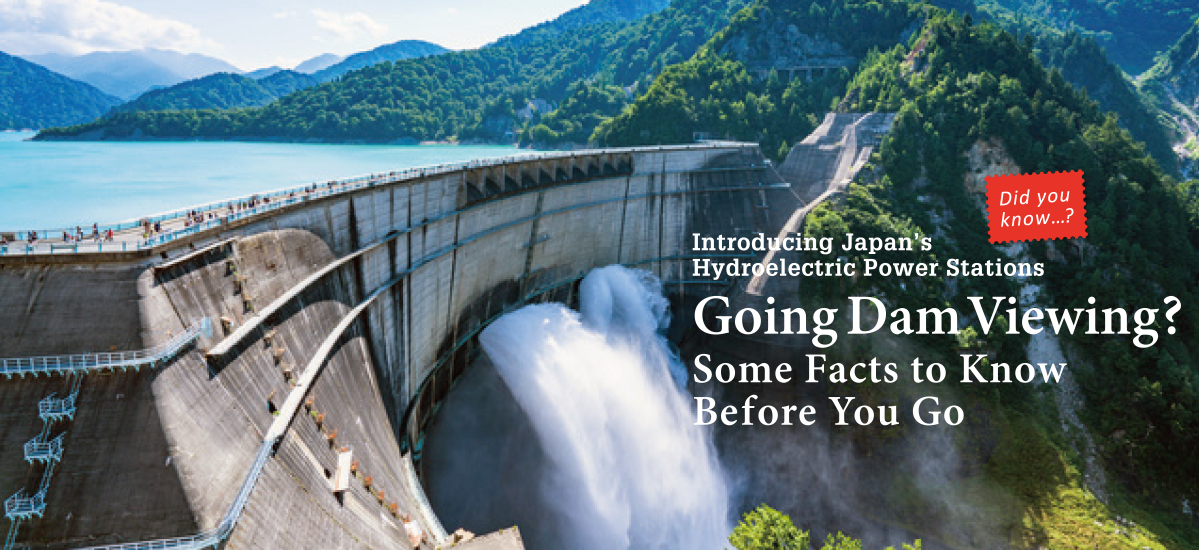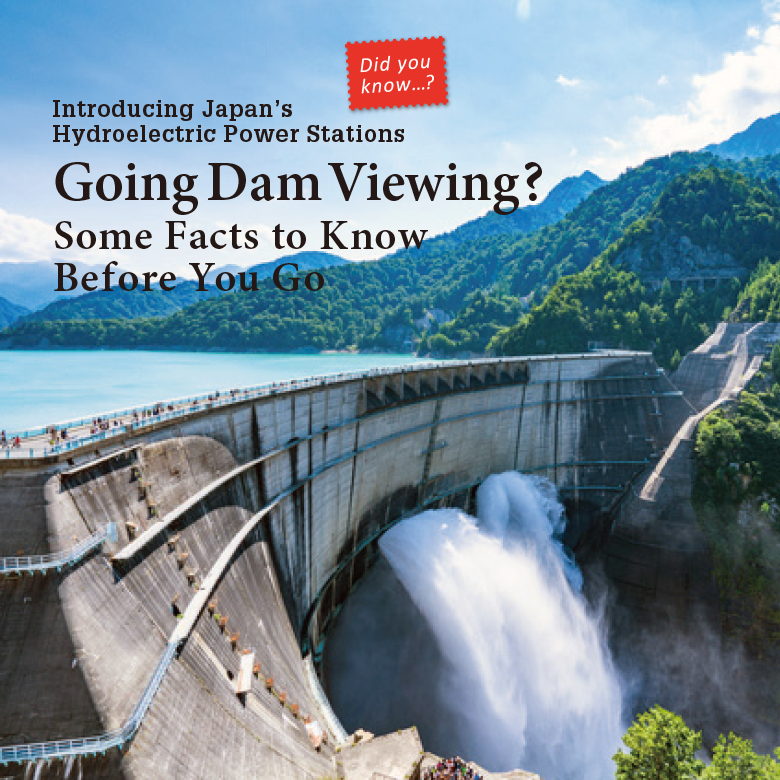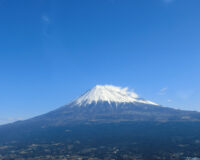

Dam viewing is a growing tourism niche in Japan, with sightseers attracted by the scale and grandeur of soaring hydroelectric dams located amid stunningly beautiful scenery. Having a few facts under your belt before you go adds meaning to the dam viewing experience. Here’s a little basic knowledge to take with you, along with your binoculars and camera.
Text : 藤森禮一郎 Reiichiro Fujimori / English Version : Judy Evans
Keyword : Japan Hydroelectric Dams / Japan Hydroelectric Power Stations / Pumped Hydro Energy Storage / Kurobe Dam
Japan’s Hydro-Electric Dams – The Origins
It was at the end of the 19th century, with the introduction of electricity meters, that the electricity sector in Japan took off. On November 3rd, 1907, the specialist business magazine the Electrical News (forerunner to today’s Denki Shimbun) was launched. The foreword of the first issue began, “We have seen the introduction of the electric telegraph and the radio telegraph, as well as a great many other productive industries that depend on electricity, such as electric railways and electric lights…”, reflecting the prevailing optimism of what we now know as the Second Industrial Revolution,
Japan’s earliest hydroelectric power station on record, the Sankyozawa Power Station, was constructed in Sendai in 1888. Built by the company Miyagi Bōseki, this was a small power generator with a 5 kilowatt DC output for private local use. Miyagi Bōseki started as a cotton spinning company and succeeded in using water mills originally designed for cotton spinning machines to generate electricity. Later, as Miyagi Bōseki Dentō, the company established Japan’s first hydroelectric power plant for public use, generating electricity for lighting in Sendai.
In the early days of electricity in Japan, it was not uncommon for businesses such as spinning or mining companies to construct private power plants for their own use. There is even a record from 1892 of a power plant at Sengan-en, the private estate of Kyūshū’s Shimazu family (formerly a powerful feudal clan). Built as part of the industrial complex established there towards the end of the feudal era, only a few traces of that now remain, but all these early power generation sites echo with the dreams and ambitions of their builders.
Types of Hydroelectric Plants and Hydropower
There are currently over 2,200 hydroelectric power stations in Japan, hydroelectricity being the main form of power generation in Japan until the 1970s. Many of these power stations are “pumped energy storage” stations. Pumped hydro energy storage generates electricity by pumping water from a lower reservoir to an upper reservoir and using this water to generate power when needed. During (daytime) periods of peak demand, water is channelled through turbines from the upper reservoir into the lower reservoir to generate electricity. The direction of flow is reversed at night, and water is drawn back up to the upper reservoir utilising off-peak surplus electricity from the grid. Compared to electrical energy storage using utility-scale batteries or other methods, energy in the pumped storage system is stored in the form of gravitational potential energy in the upper reservoir, ready to feed electricity into the national grid during periods of high demand. In turn, the system helps balance the pressure of over-supply in the national grid by utilising surplus electricity during off-peak periods.
Hydroelectric generation know-how and civil technology have made great strides in the one hundred and thirty years since the establishment of Japan’s earliest power stations, fuelling Japan’s post-war reconstruction and rapid economic growth, and bringing electricity to every household and business in the country.
Imbued with history, Japan’s hydroelectric power stations still have the power to inspire awe and wonder. Here are the top ten, in terms of power generation.
Pumped Storage Hydroelectric Power Stations
1. Okutataragi Pumped Storage Power Station
Location: Asago, Hyōgo Prefecture (Maruyama River Catchment Area).
Generation capacity: 1,932 megawatts.
Last commissioned (see note below): 1998, Kansai Electric Power Company. All six turbines operational.
2. Okukiyotsu Pumped Storage Power Station, No.1 and No.2 PlantLocation: Yuzawa, Niigata Prefecture (Shinano River Catchment Area).
Combined capacity: 1,600 megawatts.
Last commissioned: No.1 Plant, 1982, Electric Power Development Company. All four turbines operational. No.2 Plant, 1996, Electric Power Development Company. Both turbines operational.
3. Okumino Pumped Storage Power Station
Location: Motosu, Gifu Prefecture (Kiso River Catchment).
Capacity: 1,500 megawatts.
Last commissioned: 1991, Chubu Electric Power Company. All six turbines operational.
4. Shintakasegawa Pumped Storage Power Station
Location: Ōmachi, Nagano Prefecture (Shinano River Catchment).
Capacity: 1,280 megawatts.
Last commissioned: 1981, Tokyo Electric Power Company. All four turbines operational.
5. Ōkawachi Pumped Storage Power Station
Location: Kamikawa Town, Hyōgo Prefecture (Ichikawa River catchment).
Capacity: 1,280 megawatts.
Last commissioned: 1995, Kansai Electric Power Company. All four turbines operational.
Other Types of Hydroelectric Power Stations
1. Okutadami Dam and Power Station
Location: Hinoemata, Fukushima Prefecture (Agano River catchment area).
Capacity: 560 megawatts.
Last commissioned: 2003, Electric Power Development Company. All four turbines operational (the fourth is in the new extension).
2. Tagokura Dam and Power Station
Location: Tadami, Fukushima Prefecture (Agano River catchment area).
Capacity: 400 megawatts.
Last commissioned: 1961, Electric Power Development Company. All four turbines operational.
3. Sakuma Dam and Power Station
Location: Hamamatsu, Shizuoka Prefecture (Tenryū River catchment area).
Capacity: 350 megawatts.
Last commissioned: 1956, Electric Power Development Company. All four turbines operational.
4. Kurobe River No. 4 Power Station (pictured above)
Location: Kurobe, Toyama Prefecture (Kurobe River catchment area).
Capacity: 335 megawatts.
Last commissioned: 1973. Operated by Kansai Electric Power Company. All four turbines operational.
5. Arimine No. 1 Power Station
Location: Toyama, Toyama Prefecture (Jōganji River catchment area).
Capacity: 265 megawatts.
Last commissioned: 1981, Hokuriku Electric Power Company. Three turbines.
Note: During power station construction, several power generator turbines are installed. These are put into commission one at a time, so it can sometimes take a decade or more for all turbines to be in commission.








